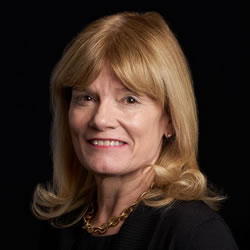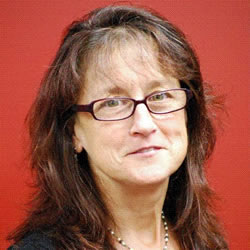Profiles in Geriatrics
Profiles in Geriatrics

Terry Fulmer, PhD, RN, FAAN, AGSF
President
The John A. Hartford Foundation
Nurse Member
Can you tell us about your professional history before you came to The John A. Hartford Foundation? How did your geriatrics training help you in your leadership positions outside geriatrics?
The Journal of the American Geriatrics Society gave me an excellent opportunity to tell my story in the Pioneers section of the July 2015 issue. In the article, I was able to describe my extraordinary good fortune to begin my career at the Beth Israel Hospital in Boston during the years when the Harvard Division on Aging was founded. Jack Rowe, along with a stellar group of interdisciplinary colleagues, gave me a platform to delve into understanding the essence of acute care geriatric nursing and elaborate on what the profession of geriatric nursing could be. There, I also began my elder abuse research, which to this moment is central to my work. Those years were the harbinger for Nurses Improving Care for Healthsystems Elders (NICHE) and for the exciting work I was able to do at the Hartford Institute for Geriatric Nursing (HIGN) with Mathy Mezey and the outstanding HIGN team. One of the important lessons I learned working in geriatrics is that addressing the needs of older adults improves care for all people. For example, all patients benefit from person-centered care and team care. And because resources traditionally have not been as plentiful in the field of aging as in some other areas, there has always been a strong emphasis on collaboration and partnership. I believe that having that understanding makes me a more effective leader whether I’m working specifically in geriatrics or other areas.
Your career has spanned the clinic, the community, and the classroom in support of expert eldercare. Can you tell us a bit about why you have an interest in geriatrics and what led you to your new position at The John A. Hartford Foundation?
My interest in geriatrics was immediate as a young nurse, when I saw the opportunity to step up and lead improvements in practice for the frail older people who were in our care. There are many ways to influence better care for older adults. Whether you are teaching the next generation of clinicians, conducting research to generate new knowledge that improves care, informing policymakers with research, or focusing on practice models that improve care, there are many ways to make a meaningful difference. I had not considered the role of foundation president as a part of my career trajectory. However, when the opportunity presented itself and I began to explore the possibilities with the search committee, everything fell into place. I knew this would be one more exceptional way for me to improve care of older adults and I am thrilled to be at The John A. Hartford Foundation. This Foundation has shaped my career in innumerable ways and I am so grateful and proud to be able to serve as the President.

Freddi Segal-Gidan, PA, PhD, AGSF
Director
Rancho/USC California Alzheimer’s Disease Center (CADC)
Physician Assistant Member
How did you choose to become a geriatrics health professional?
My path to my practice as a physician assistant (PA) in geriatrics was certainly inspired by my grandmother. A Russian émigré who died at 101, she was still navigating public buses in Southern California when she was 99. Her life was the epitome of what it means to age well.
However, geriatrics wasn’t the first profession I considered. In college, I spent a gap year in Africa. That trip changed my life. I cast aside other career notions (among them becoming a primatologist) and decided to train as a PA. I returned to college back in the U.S. and did my post-grad PA studies at Johns Hopkins University.
Initially, my PA training was in primary care. A former classmate encouraged me to work with him at a multi-disciplinary medical practice in Los Angeles. The practice had just joined the Medicare Advantage program and they needed someone to work with older adults. It became a perfect fit for me.
While there, I was offered a yearlong geriatrics fellowship training opportunity at USC, and that’s when I joined our Society.
What do you value about AGS membership?
I attended my first Annual Scientific Meeting back in 1985 or so, and I realized when I arrived that I was among people who shared my worldview and my commitment to caring for older adults.
Even though there were few other geriatric PAs back then, the physicians, nurse practitioners, registered nurses, and social workers were indeed my kindred spirits.
I’ve built great personal relationships with AGS members over the years, and I’ve been actively involved in various committees. The Annual Scientific Meetings provide great opportunities to meet the people whose research you’ve been following over the years. Another thing I love about the field, and I think this may be unique to geriatrics, is how eager we are to share our knowledge with others. I’ve enjoyed seeing AGS evolve over the years to become totally inclusive, and I really appreciate its focus today on interdisciplinary teamwork.
What do you wish people knew about your job?
One question I get a lot about my work in geriatrics is, “Don’t you find it sad to work with people who are so close to death?” And my answer is that it’s not sad at all. I get to travel to different cultures and even different eras through my work, because older people are so willing to share their life stories. I’ve heard first-hand about experiences I’d previously heard about only in history books. Geriatrics means you don’t just practice medicine; you get to know people, and to take care of them within the context of their own lives.
Back to Top
